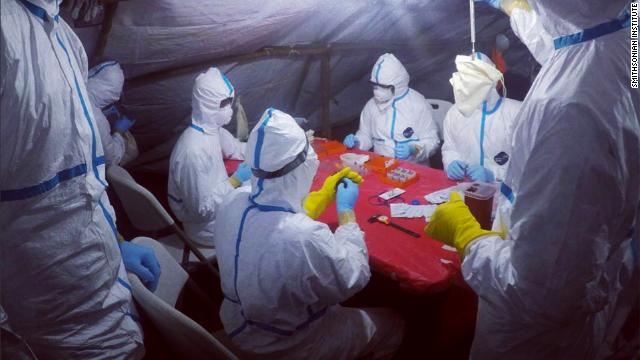[ad_1]

Before entering the cave, the small team of scientists pull on hazmat suits, face masks and thick gloves to cover every inch of their skin. Contact with bat droppings or urine could expose them to some of the world’s deadliest unknown viruses.
Equipped with headlights, they set their nets up at the entrance of the dark opening overhung with bamboo trees, which is part of a vast system of limestone caves in China’s south-western Yunnan province.
Then they patiently wait for dusk. When the sun sets, thousands of bats fly out of the caves, looking for food — and straight into their nets.
Peter Daszak is a virus hunter. He presides over EcoHealth Alliance, an American NGO which specializes in detecting new viruses and pandemic prevention.
Over the past 10 years, he has visited over 20 countries trying to prevent the next big pandemic by searching bat caves for new pathogens. More specifically, new coronaviruses.
The findings of Daszak, and others like him, inform an open-source library of all known animal viruses, from which scientists can forecast which strains are most likely to spill over to humans, in order to ready the world for a new pandemic like Covid-19.
“We (have) collected more than 15,000 bat samples, which led to the identification of around 500 new coronaviruses,” he says.
And one of those, found in a cave in China in 2013, was a possible ancestor of Covid-19.
Read the full story:

















